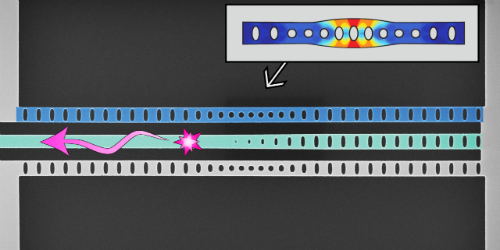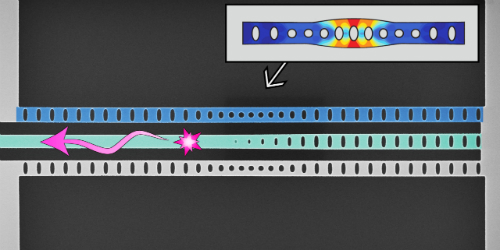Quantum Entanglement With 10 Billion Atoms
While certain quantum behaviors are currently limited to atomic systems, researchers keep searching for hints of quantum physics in more massive objects. Now Simon Gröblacher, of Delft University of Technology in the Netherlands, and colleagues have pushed the boundaries of quantum weirdness to macroscopic scales. They demonstrated quantum entanglement and violations of Bell’s inequality—a canonical test of the principle that all influences on a particle are local and that particle states exist independently of the observer. They used two mechanical resonators, each containing roughly 10 billion atoms.
In their experiments, the team placed two 10- -long resonators, made of strips of silicon, 20 cm apart in separate arms of an optical interferometer. A laser pulse shot through a beam splitter mechanically excited one of the two resonators, but there was no way to tell which one. The excited resonator emitted a photon, which passed through a second beam splitter and registered at one of two detectors. The emission of this photon signaled entanglement of the mechanical states of the two resonators. A second laser pulse verified the entanglement by converting the excited resonator’s excitation into a second photon, which was also recorded by the detectors.
In April, the team successfully demonstrated their technique, confirming that they could indeed entangle two microscopic resonators. Now, they’ve investigated the entanglement of the two mechanical oscillators with the photons by tracking which of the two detectors registered each of the photons. By measuring correlations between the final destinations of the photons, the team showed that the entanglement of the two resonators and the two photons violates Bell’s inequality by 4 standard deviations.
The team hopes to test quantum mechanics on an even larger scale by creating more complex quantum states of optomechanical systems. Also, by improving the lifetime of the mechanical excitations of the resonators—currently limited to just a few microseconds—the team says that this setup could operate as a memory node in a quantum network.
This research is published in Physical Review Letters.
–Christopher Crockett
Christopher Crockett is a freelance writer based in Arlington, Virginia.





